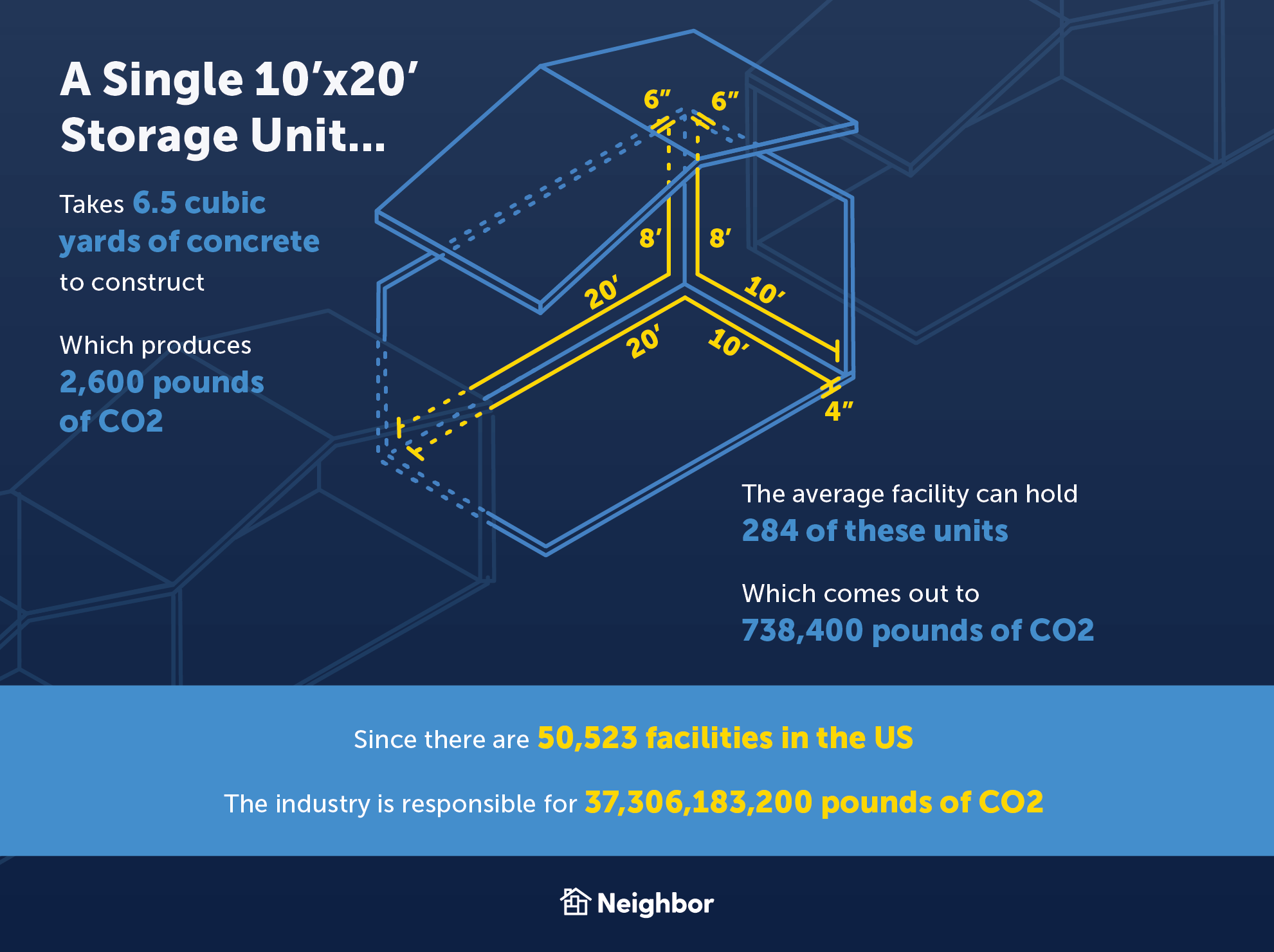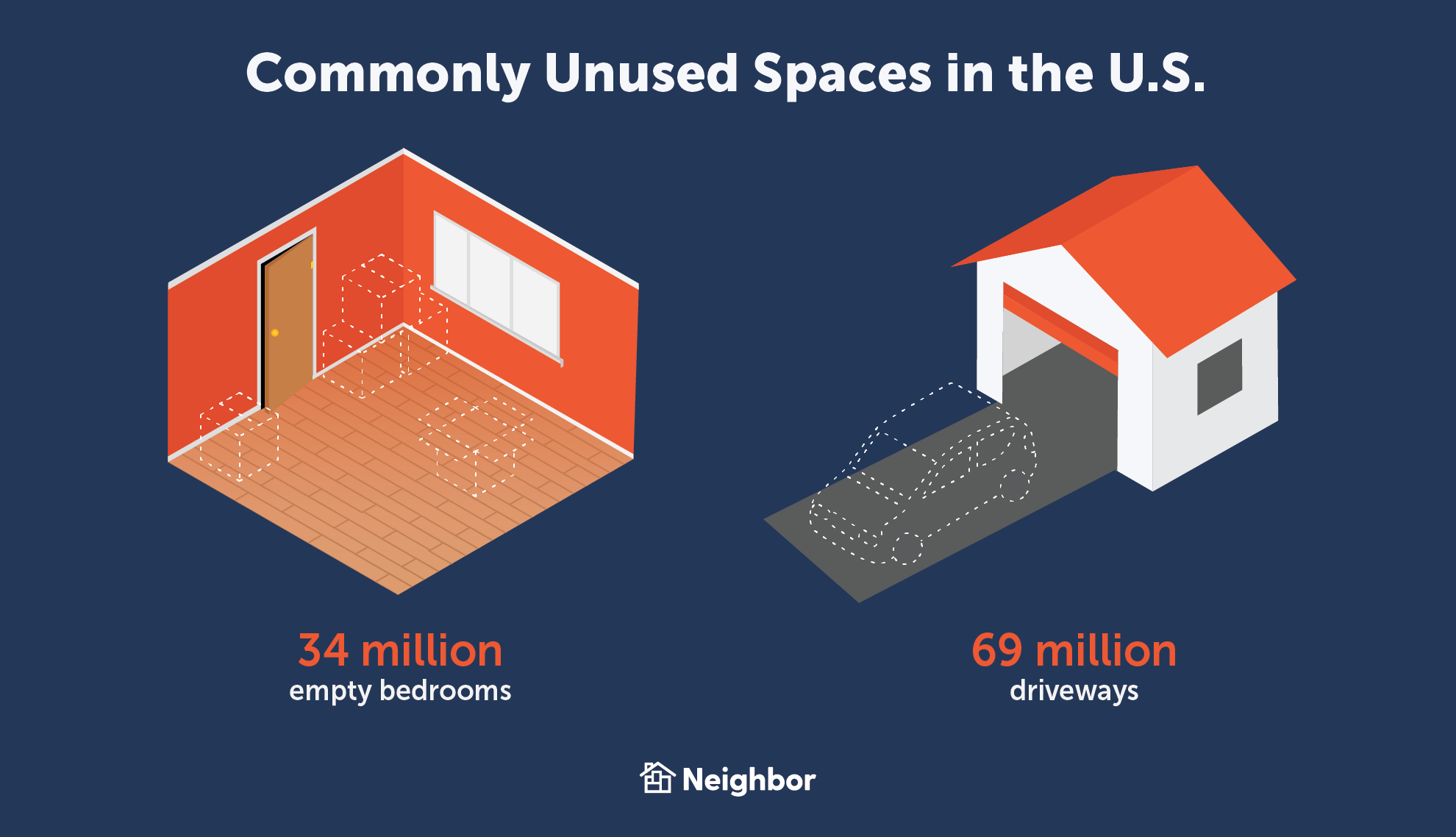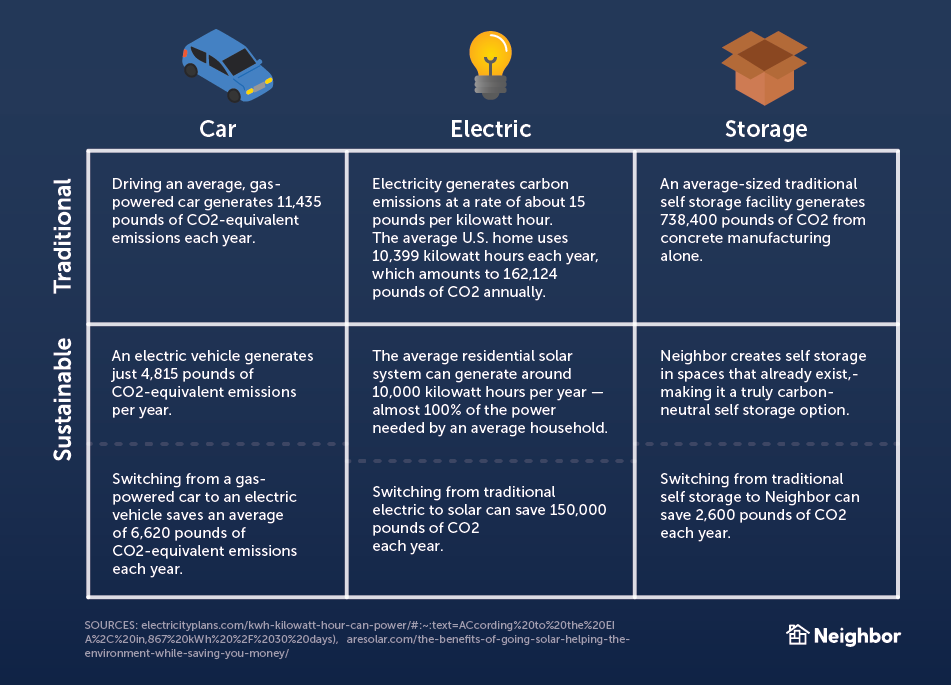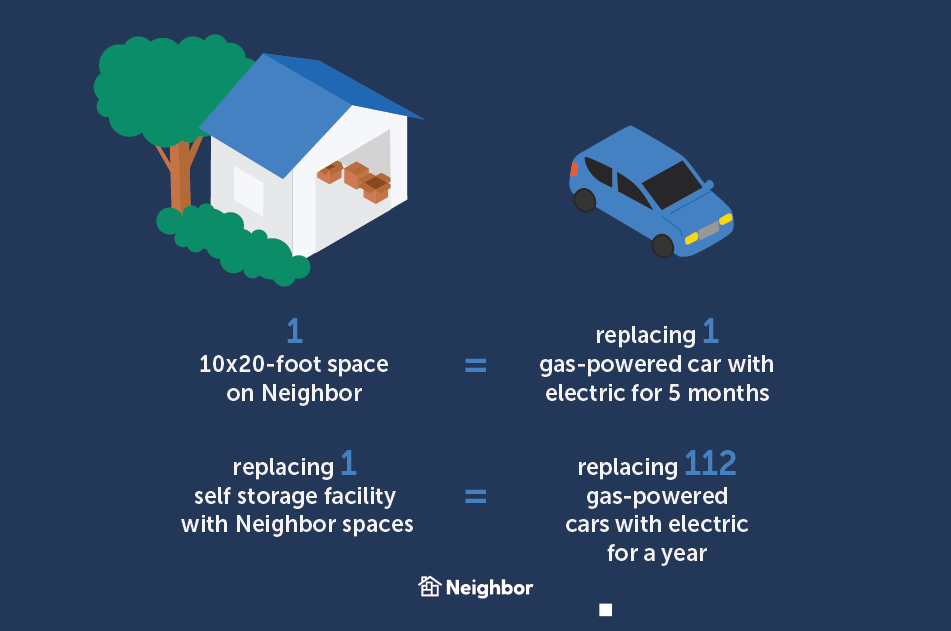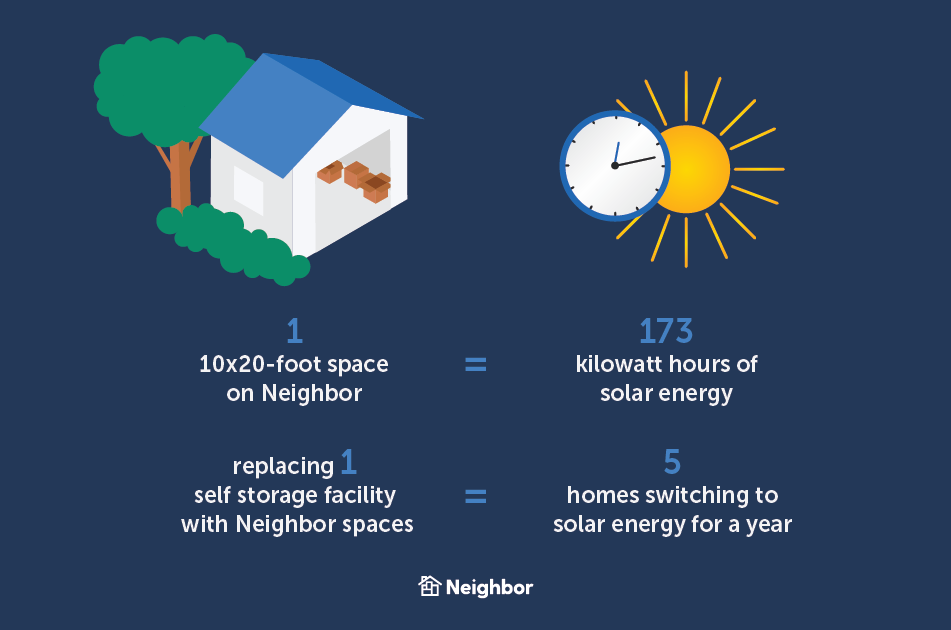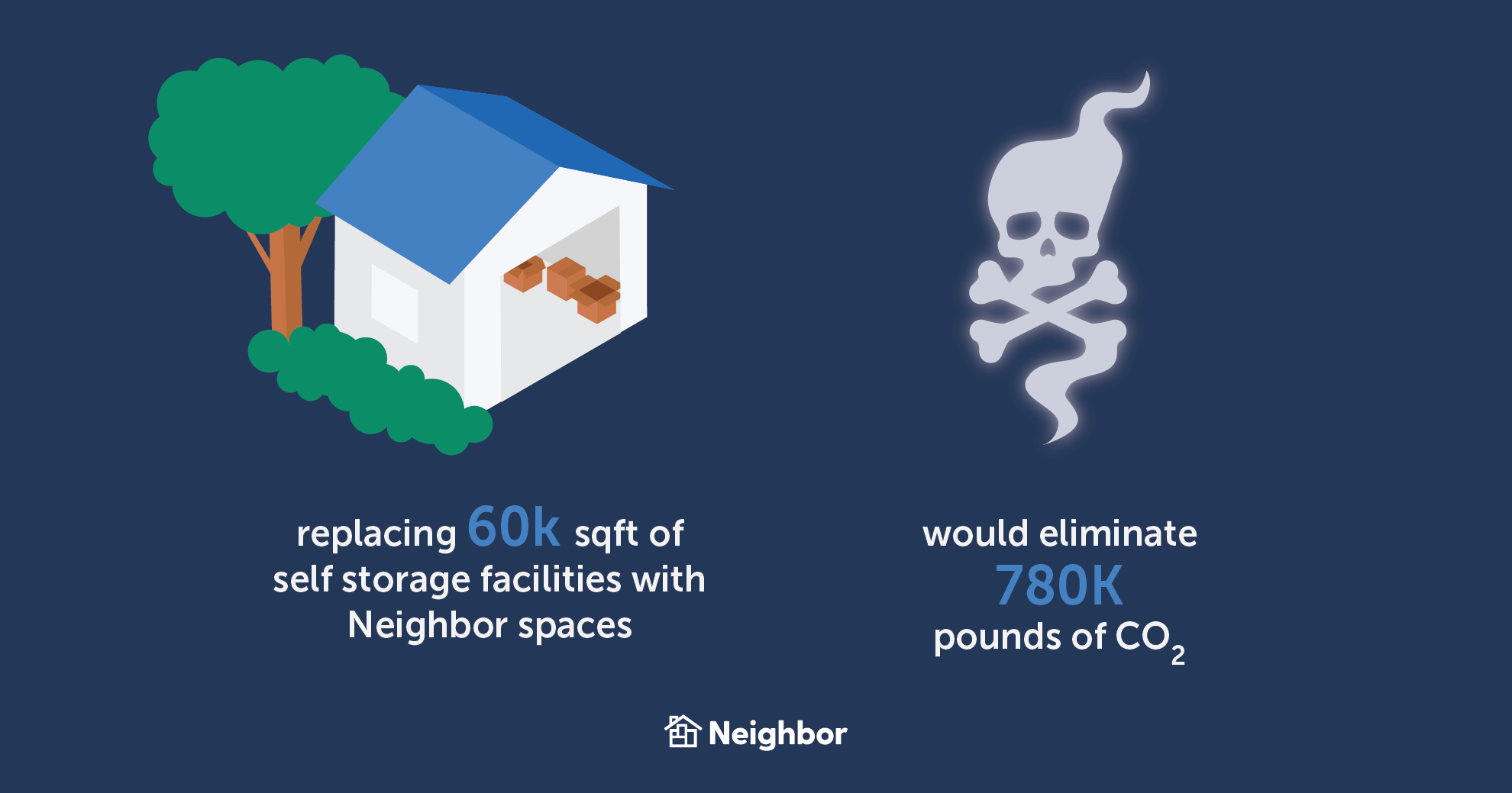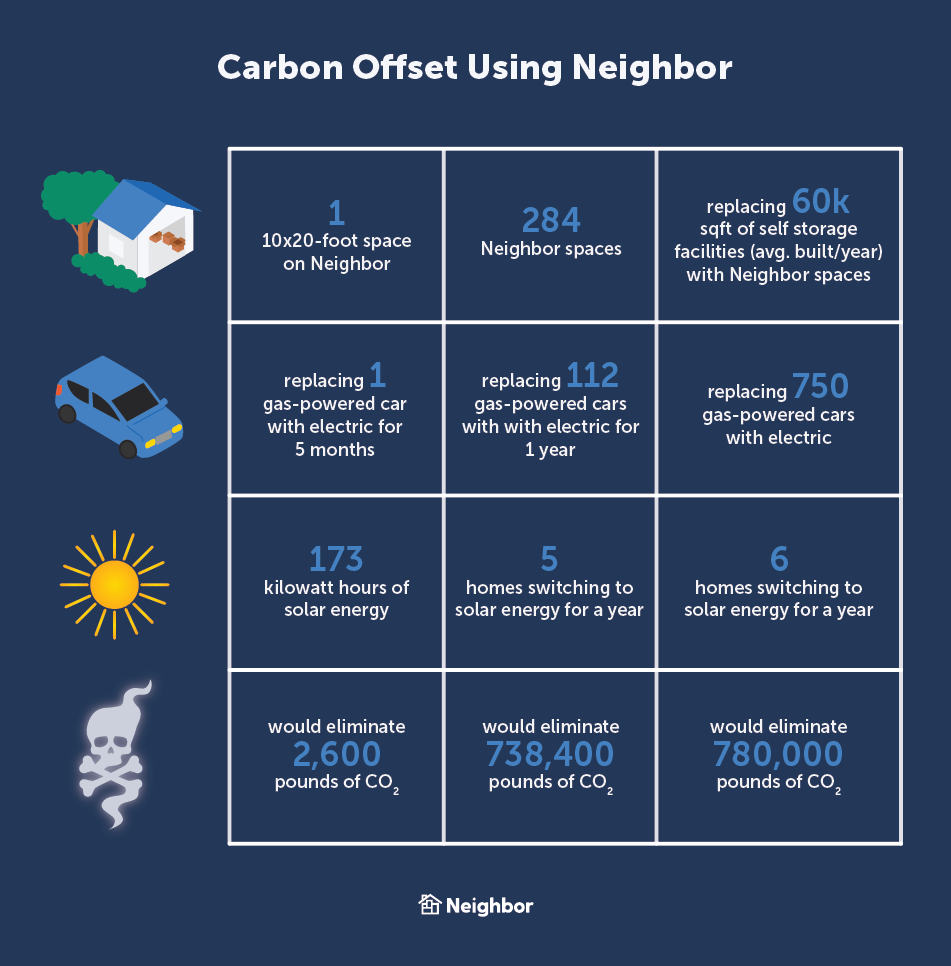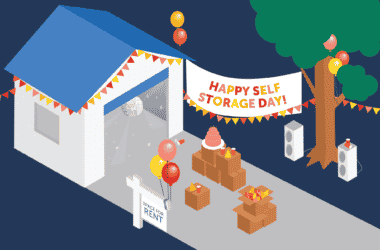1 in every nine Americans uses a traditional self storage unit.
To meet the demand for self storage, nearly $5 billion was spent building new facilities in 2021 alone. You know the type: sprawling complexes made of massive amounts of concrete and steel — two construction materials that are massively harmful to the environment.
In the first part of this series, we explored the negative environmental impact of the traditional self storage industry and aimed to raise awareness of storage’s impact among the millions of consumers paying for this extra space. But what can we do to make the self storage industry more sustainable? Read on to find out.
Let’s Review: The Traditional Self Storage Industry Creates Massive Amounts of Greenhouse Gasses
In a brief synopsis of the storage industry’s environment impact, here are the most important things to know:
- 3 materials — concrete, steel, and aluminum — are responsible for 23% of total global emissions. All three are common materials used in building self storage units.
- Every ton of steel that’s produced emits approximately 1.83 tons of carbon dioxide. Therefore, the industry as a whole generates 7-8% of total global carbon emissions.
- Cement production alone generates 2.5 billion tons of CO2 per year — about 8% of the world’s total.
- And since cement is only one material used to make concrete, manufacturing a single cubic yard (about 3,900 pounds) of concrete emits about 400 pounds of CO2.
- A 10×20-foot self storage unit requires 6.5 cubic yards of concrete to construct. At 400 pounds of CO2 per cubic yard, that’s 2,600 pounds of CO2 per storage unit.
- The average self storage facility in the U.S. is approximately 56,900 square feet, or about 1.31 acres. A facility of this size would fit 284 10×20 storage units. Creating just the concrete for a facility of that size would generate 738,400 pounds of CO2.
Meanwhile, even as consumers demand more sustainable practices from all kinds of businesses, the traditional self storage industry continues to grow at a rate that should be alarming to anyone who’s concerned about climate change.
The industry is ripe for disruption — and that’s where Neighbor comes in.
Neighbor Creates Opportunities for Sustainable Self Storage
Neighbor is a peer-to-peer self storage marketplace that allows users to turn unused space in their homes and on their property into storage for others in their community. It’s safe, convenient, affordable — and most of all, sustainable.
Neighbor helps offset the environmental impact of self storage facilities by providing an opportunity for renters to store their belongings in repurposed buildings or spaces. This eliminates the need to construct new self storage facilities — and saves the world from billions of pounds of CO2 that’s usually generated by constructing these massive buildings.
In the U.S. alone, there are approximately 34 million homes with empty bedrooms, and 69 million driveways. What if all of that space was used more efficiently? What if all of it was repurposed and used for storage? How much of the negative impact of the traditional self storage industry could be erased?
Self Storage Needs a More Sustainable Alternative
We already know that making certain changes to our lifestyles and consumption habits can help reduce the amount of carbon dioxide generated.
With those numbers in mind, here are some of the ways using Neighbor can help offset the carbon emitted by the traditional self storage industry.
Every 10×20-foot space listed on Neighbor is the equivalent of replacing one gas-powered car with an electric vehicle for five months.
The average self storage facility has enough square footage to fit 284 10×20 foot units.. For every 284 10×20 units rented on Neighbor, the carbon offset is equivalent to replacing 112 gas-powered cars with electric vehicles.
Choosing 10×20 feet of storage in an existing space on Neighbor is equivalent to more than 173 kilowatt hours of clean, carbon-neutral solar energy.
For every 284 units added to Neighbor, the carbon offset is equivalent to 5 homes switching to 100% solar energy for an entire year.
Each year, an average of 60,000 square feet of new self storage is built in the U.S. If all of that new square footage were added to Neighbor instead, it would eliminate 780,000 pounds of CO2 each year.
If all of the approximately 34 million spare bedrooms in the U.S. were listed on Neighbor, we could eliminate more than 88 billion pounds of CO2.
Neighbor Is Helping Build a Carbon-Negative Future for Storage
Neighbor is a win-win-win. This platform is helping save the world from potentially hundreds of millions of pounds of greenhouse gasses. At the same time, hosts get to earn passive income by listing their spare spaces, and renters get a more safe, affordable, and sustainable storage option.
You can help Neighbor make the self storage industry more sustainable. List your extra space to earn some spare cash — or, if you rent a traditional self storage unit, consider switching to a space listed on Neighbor.

